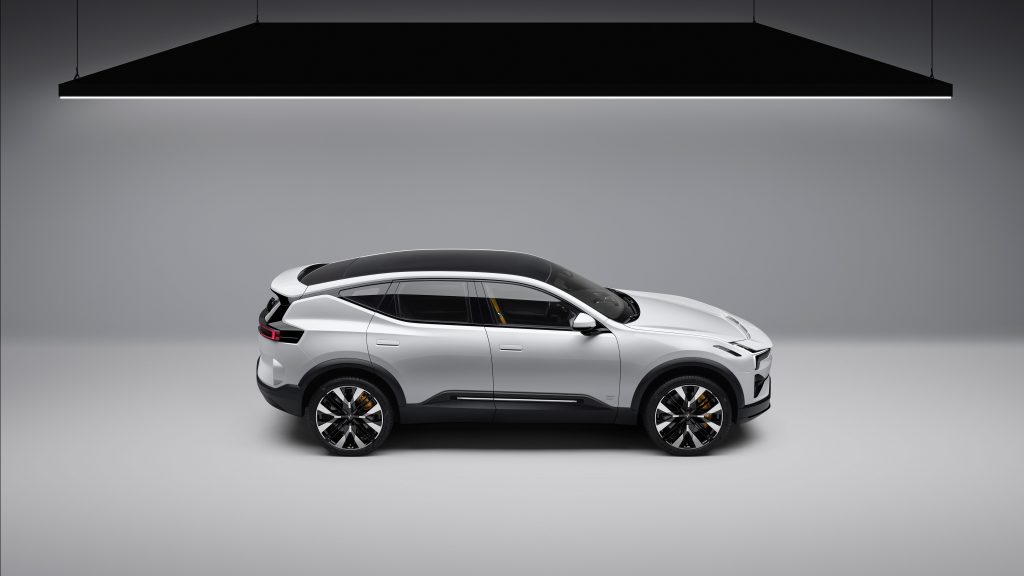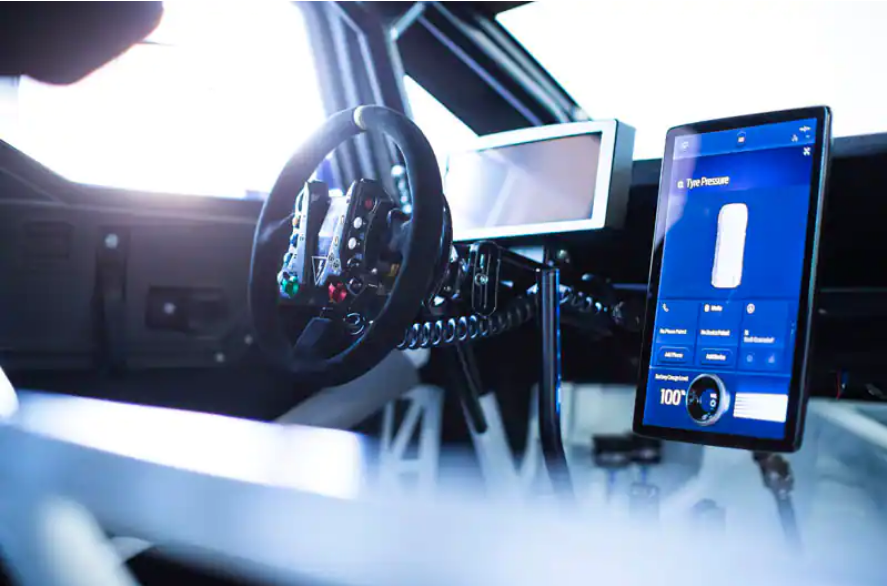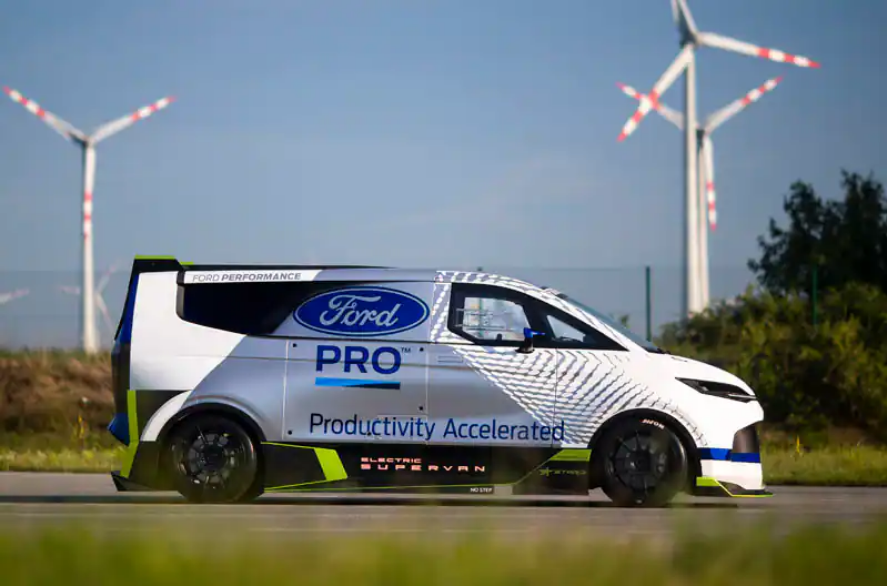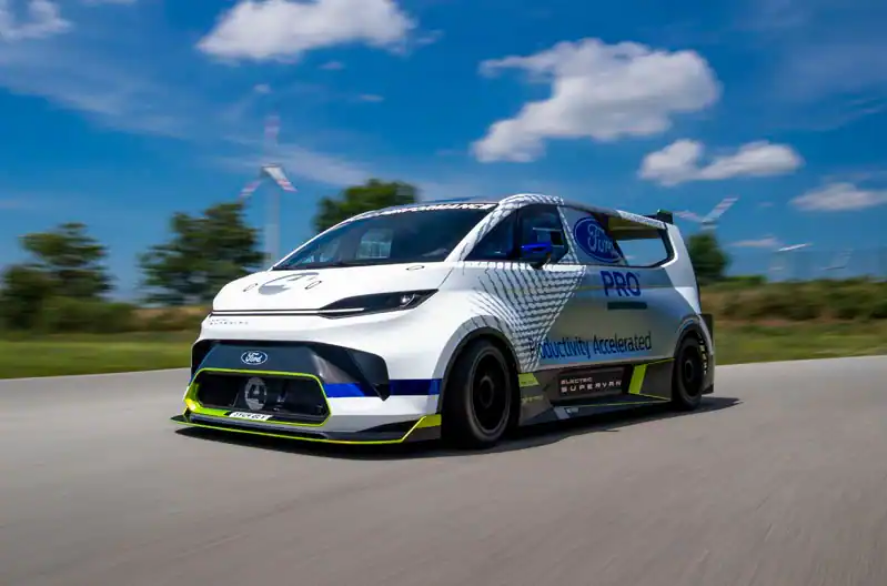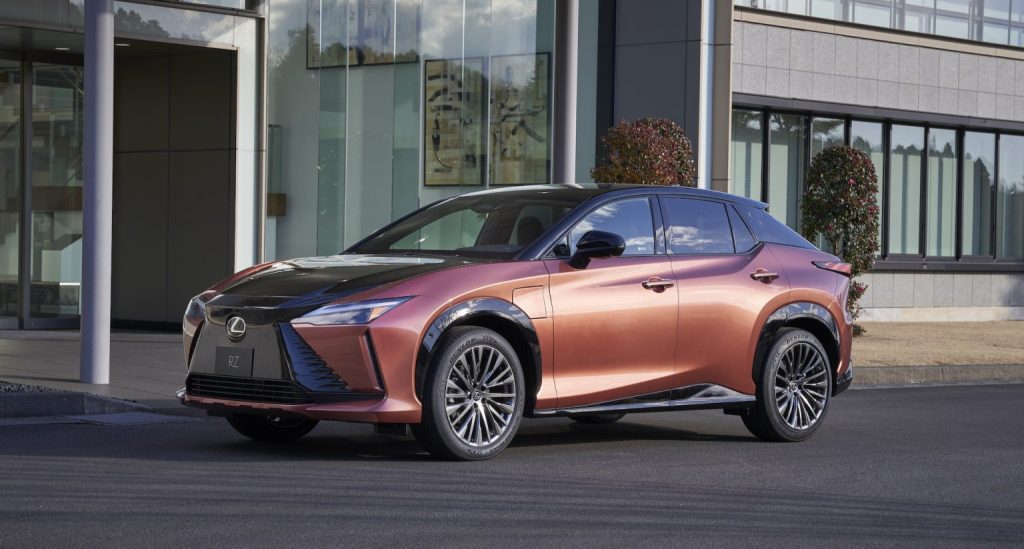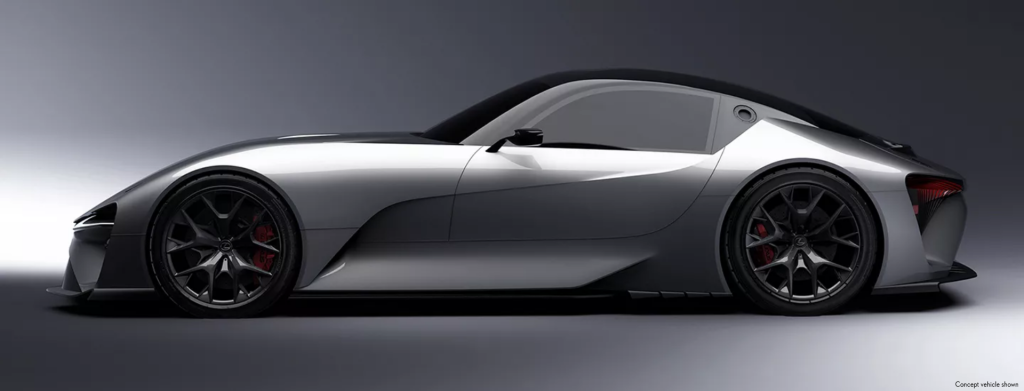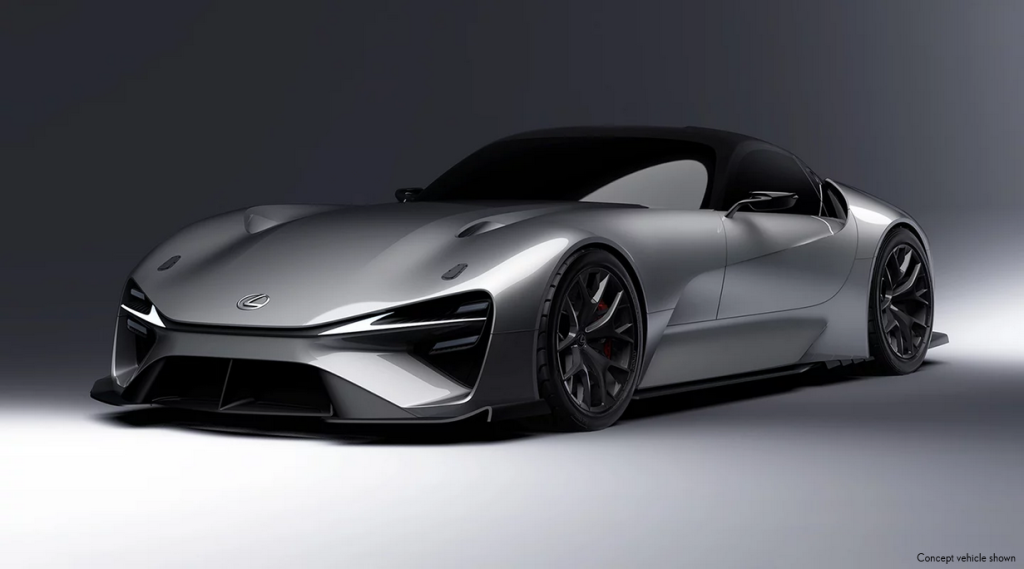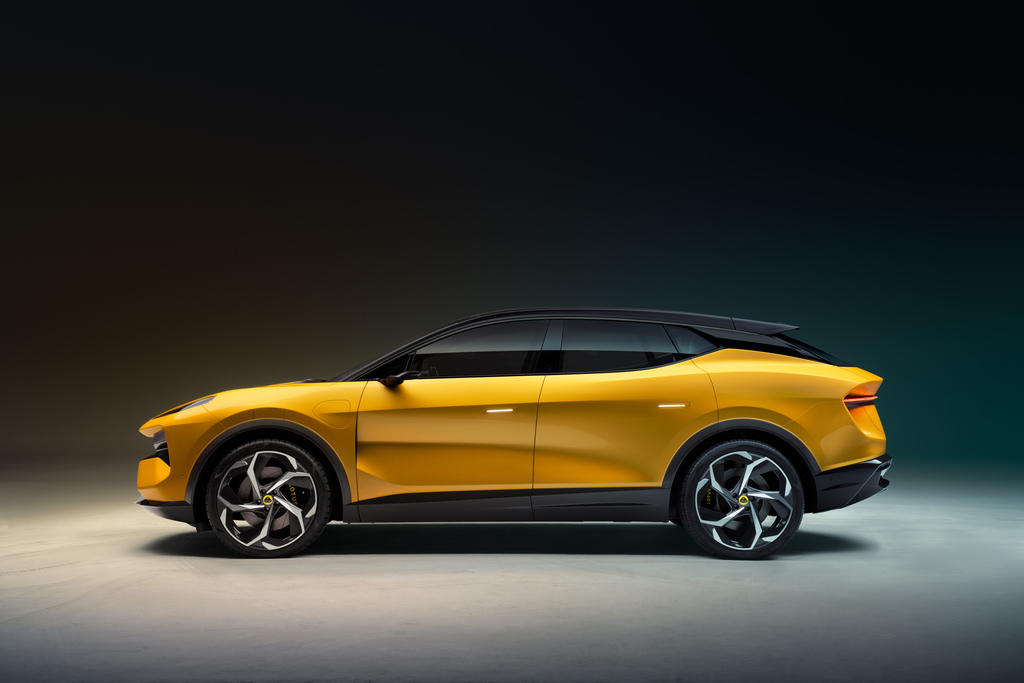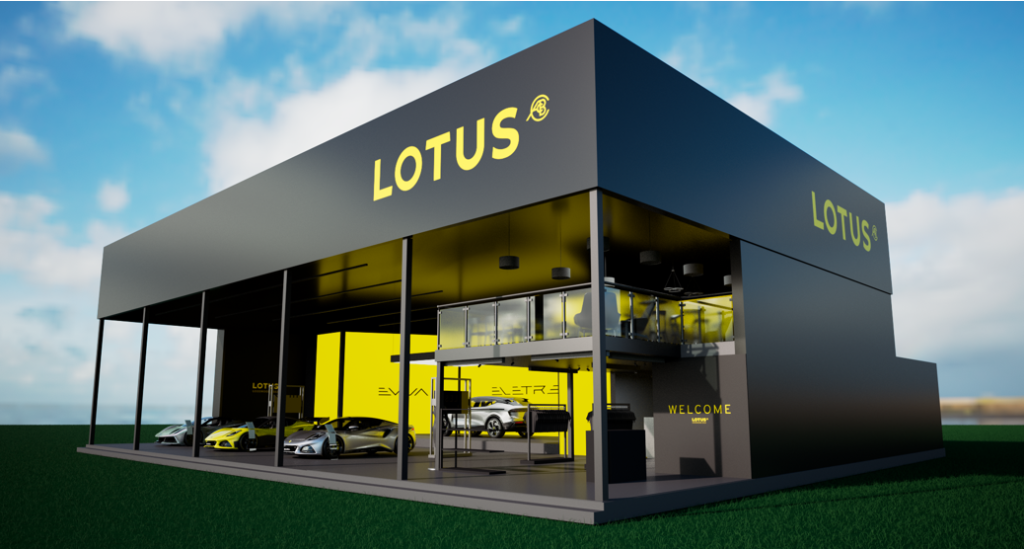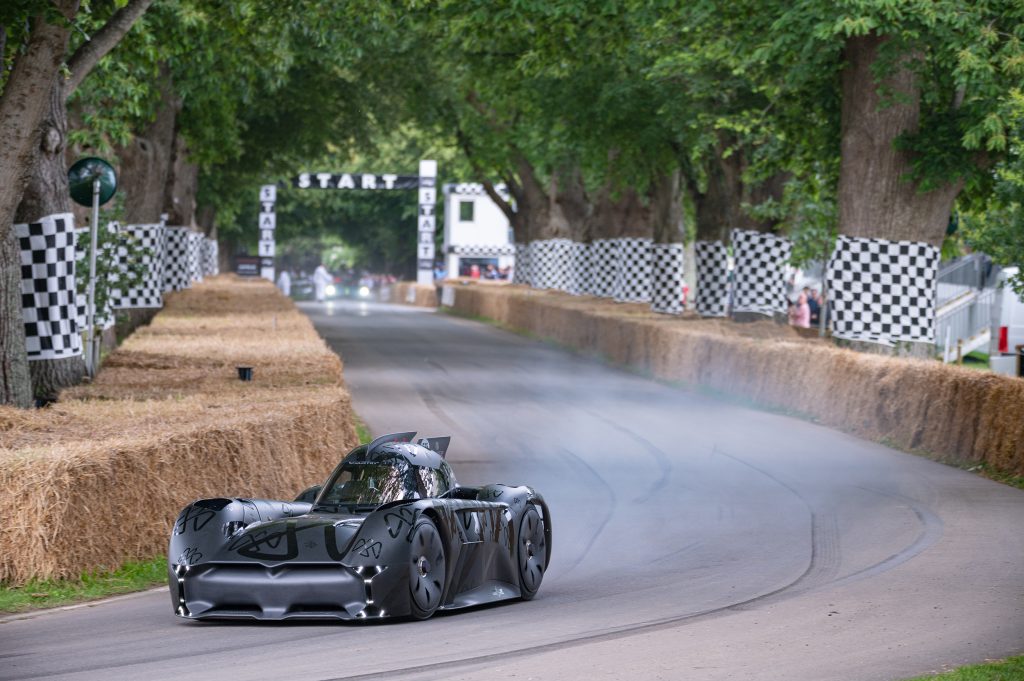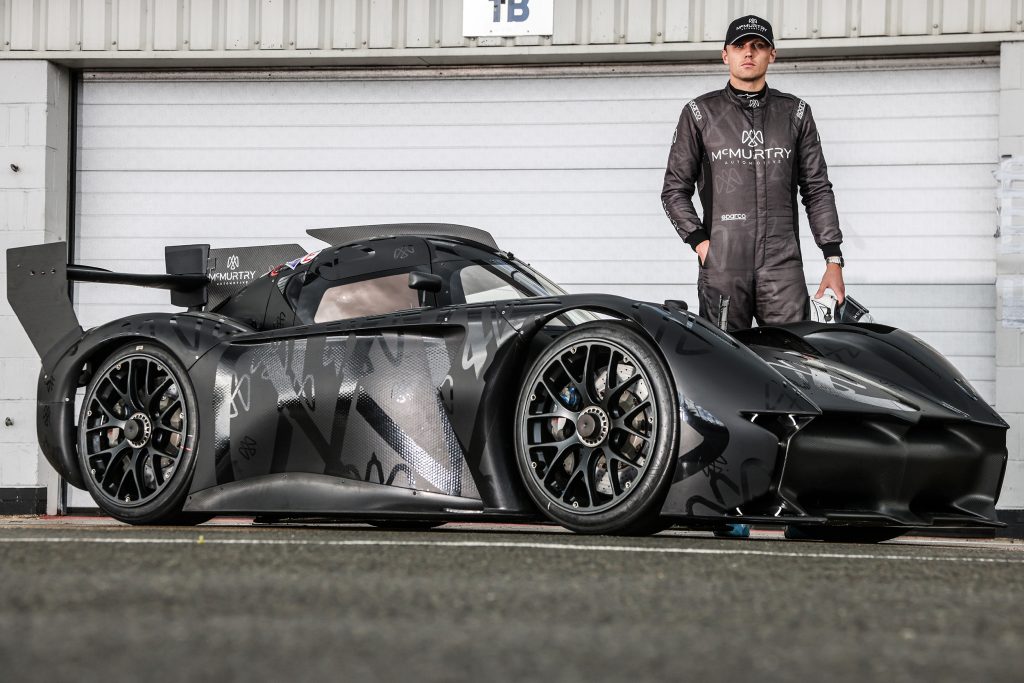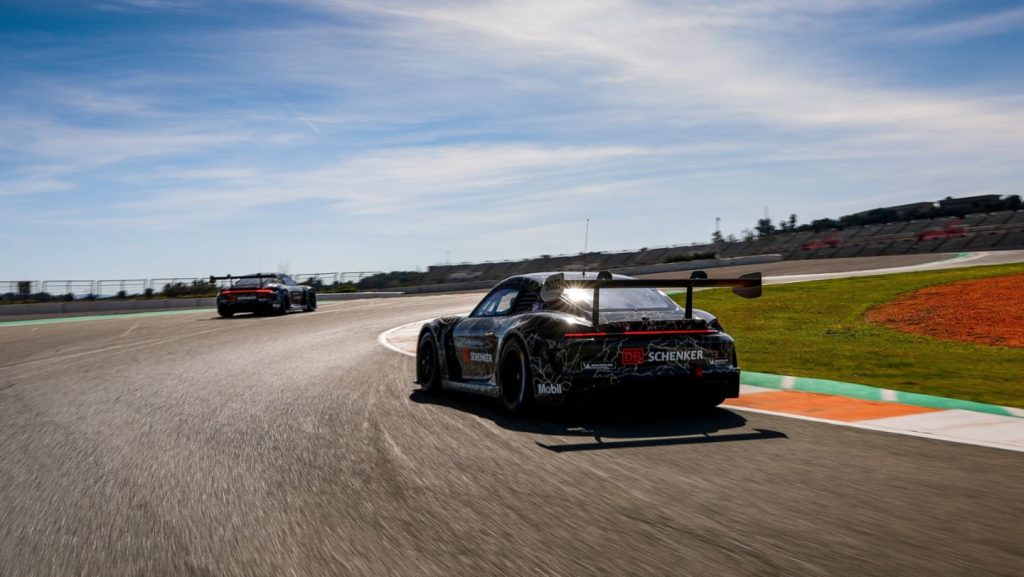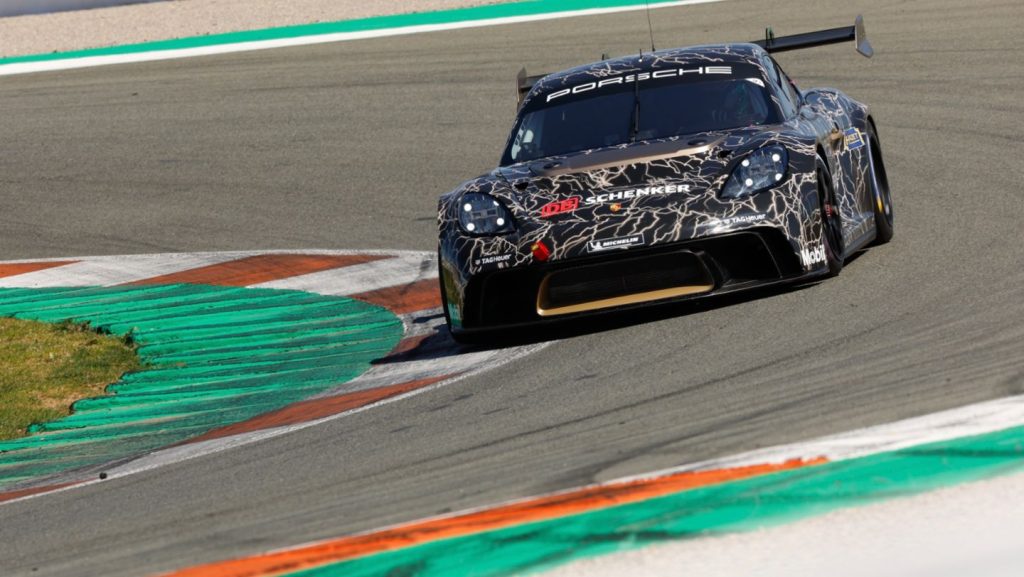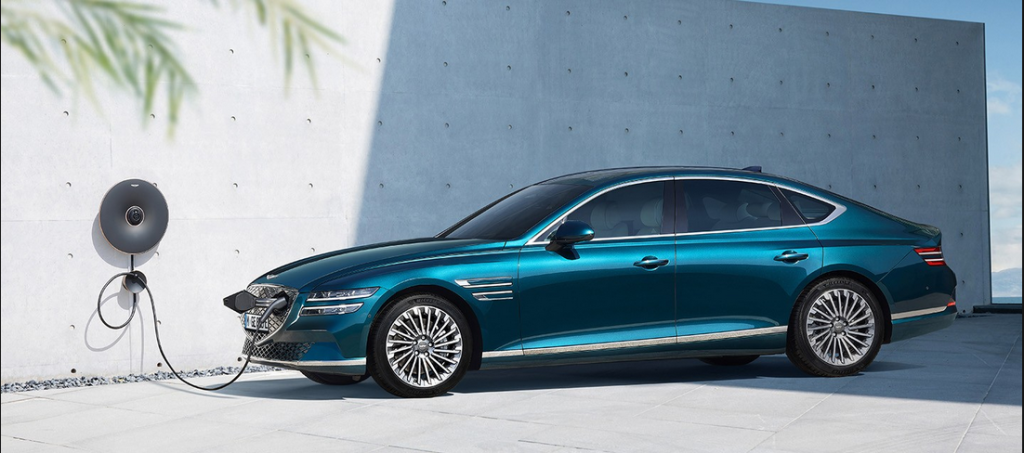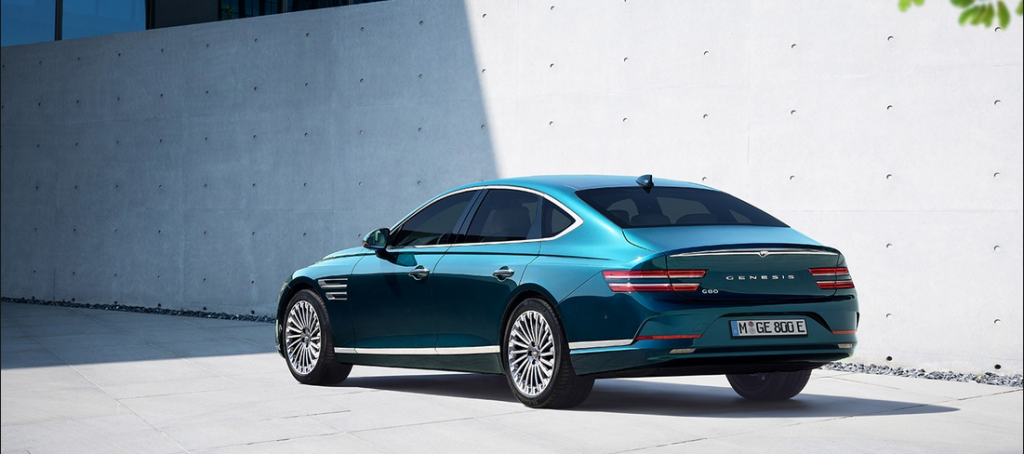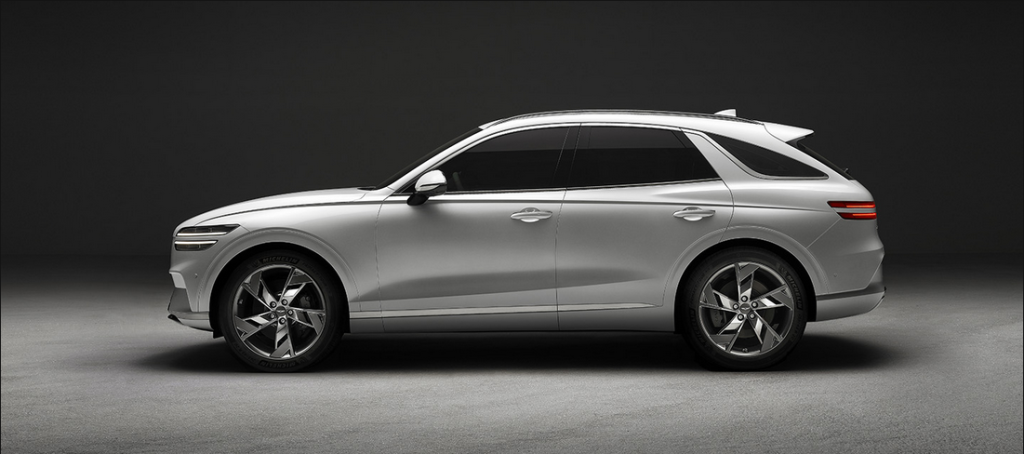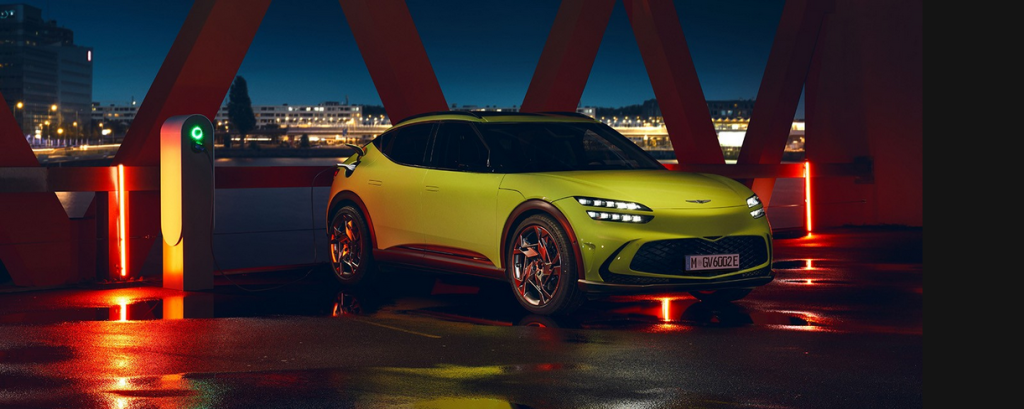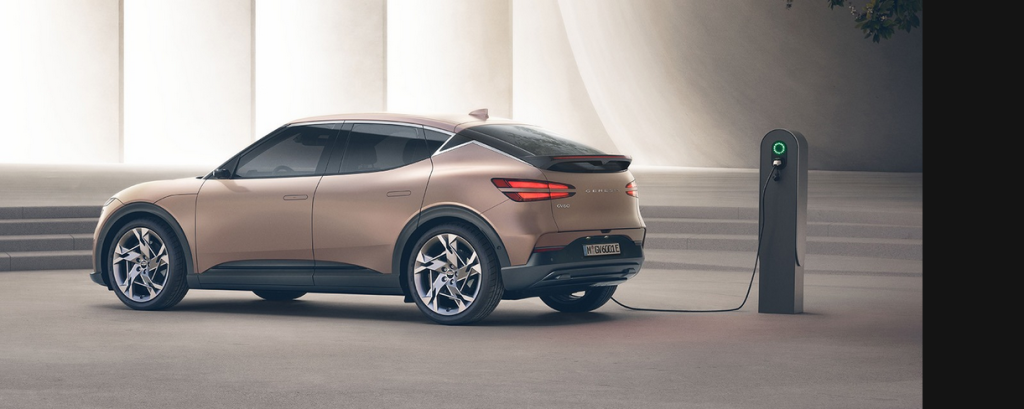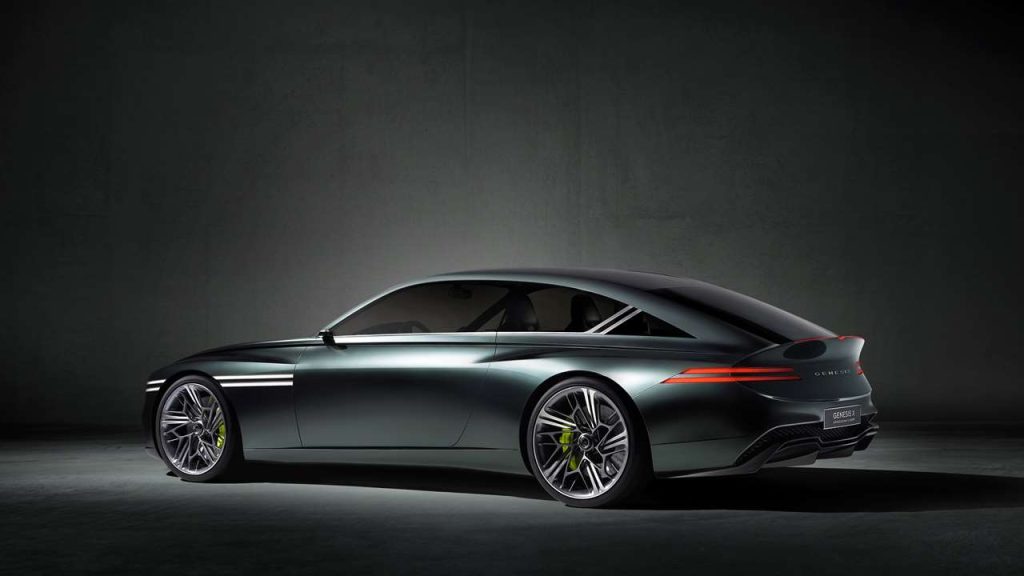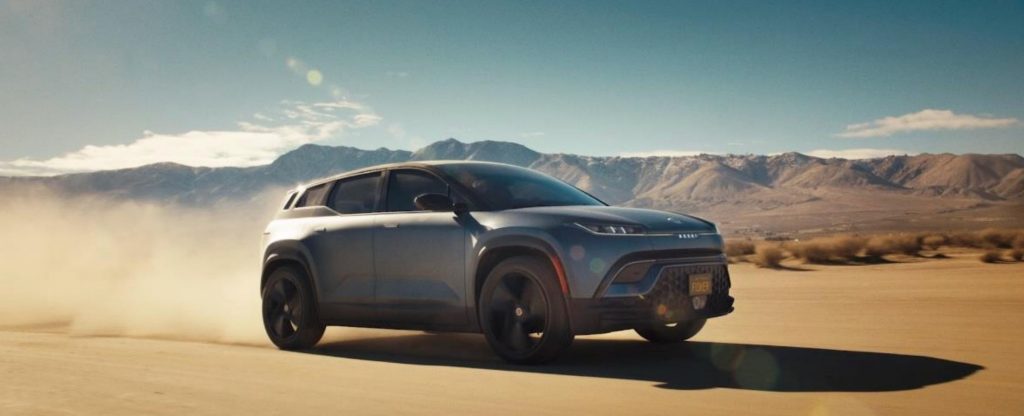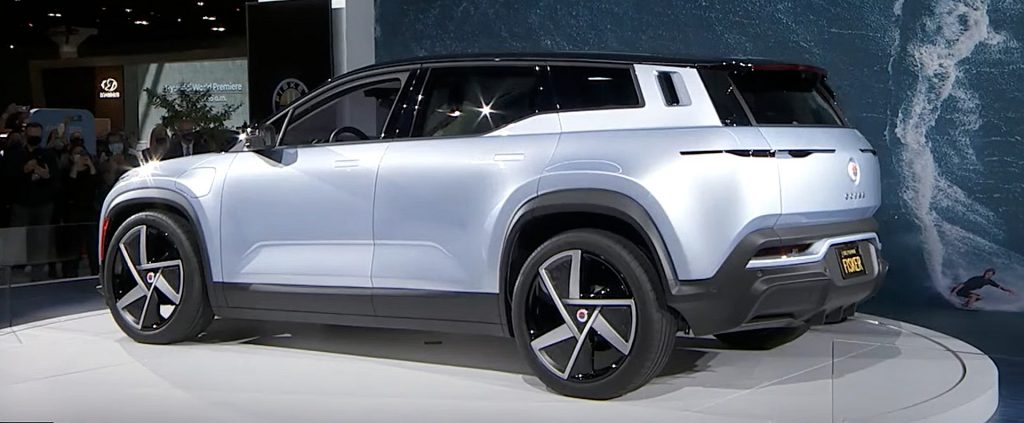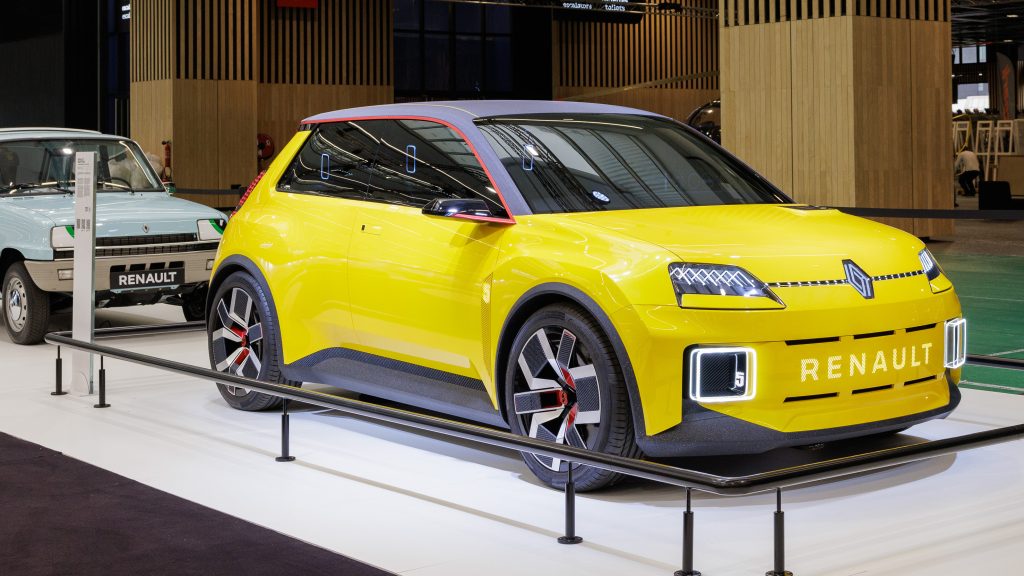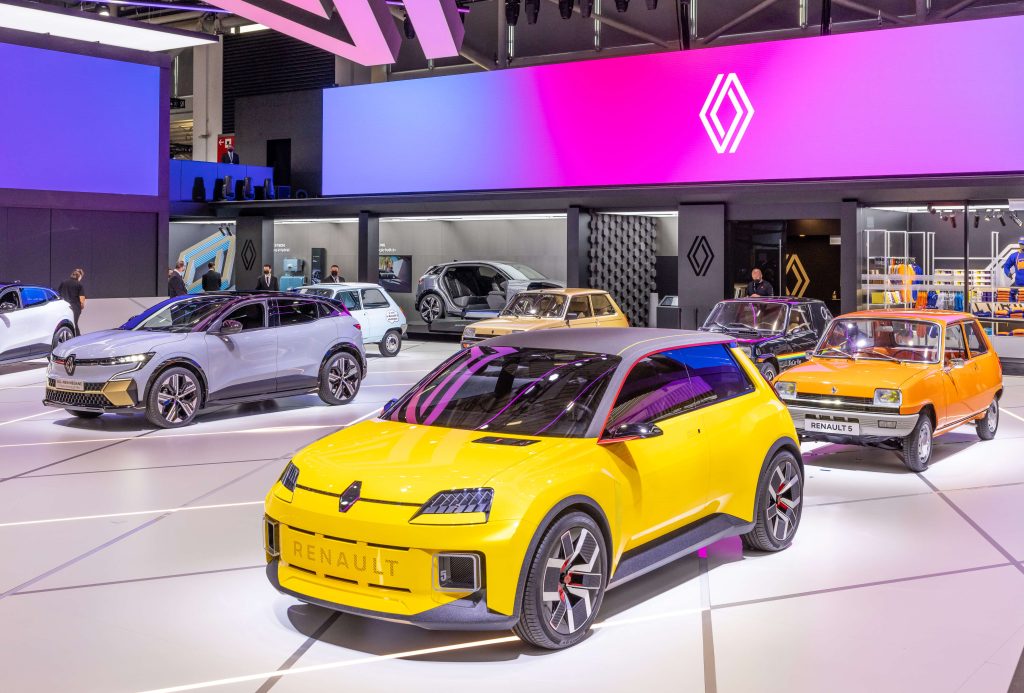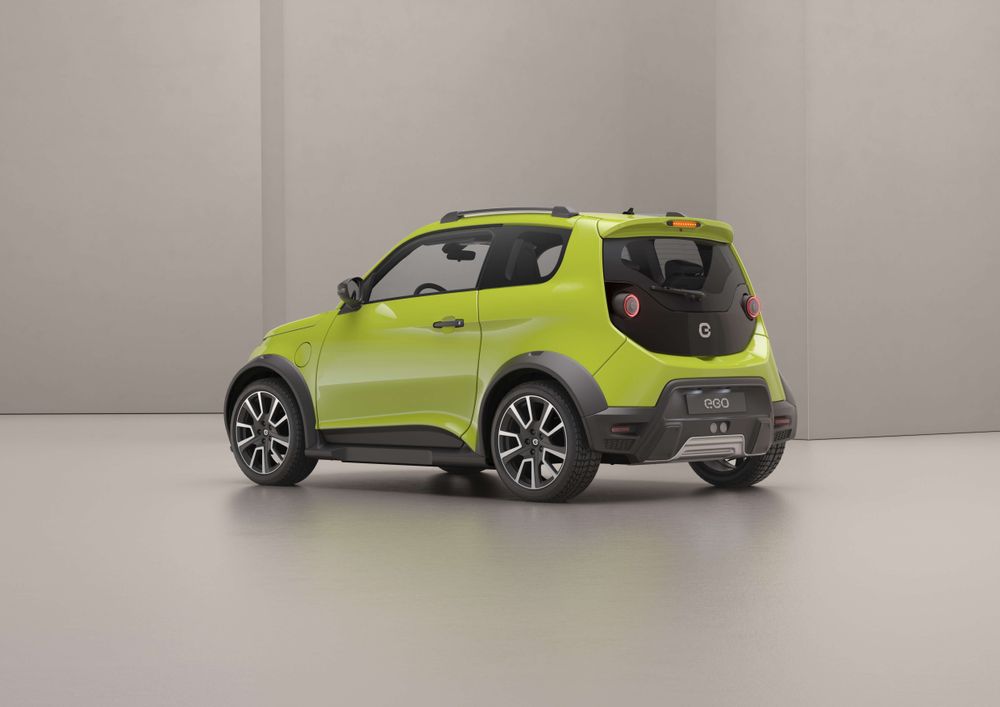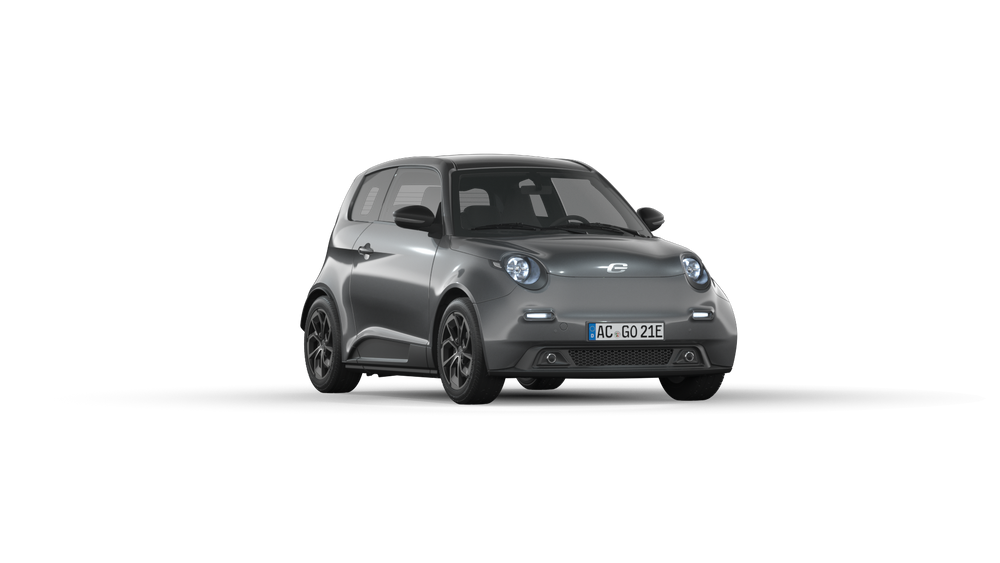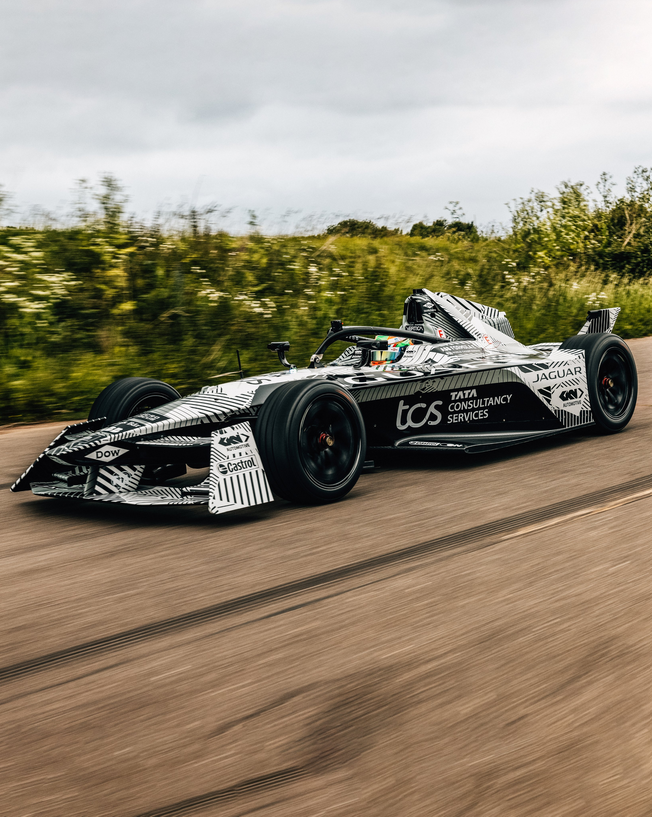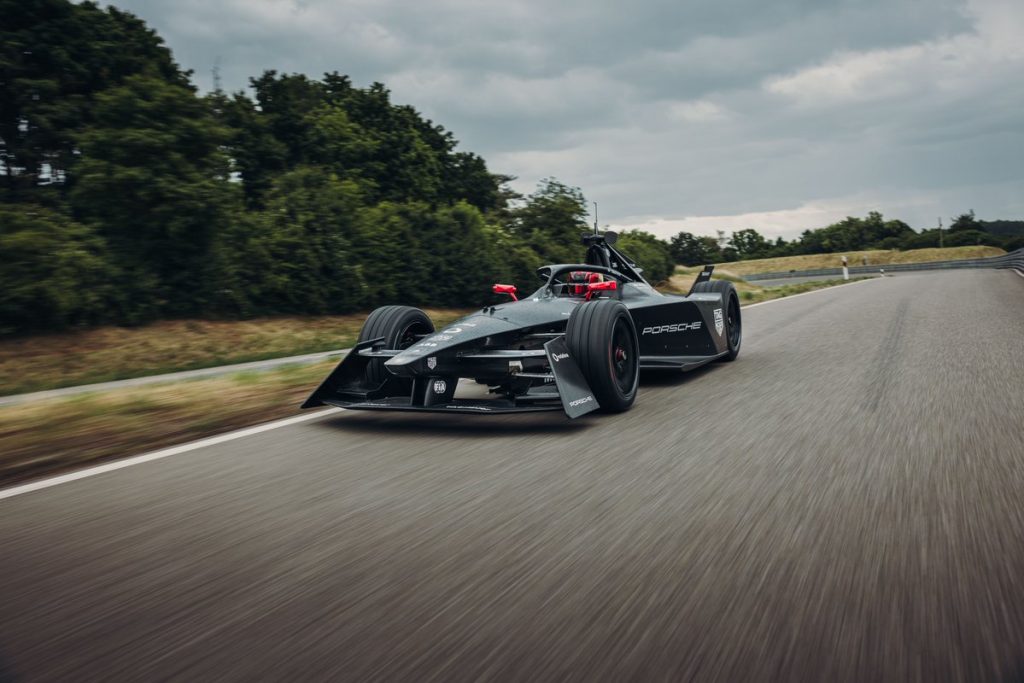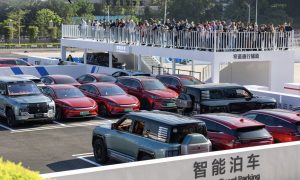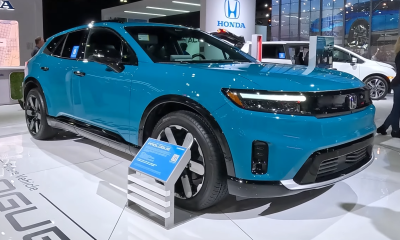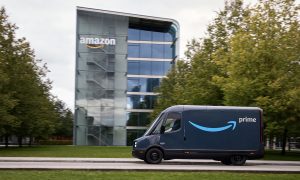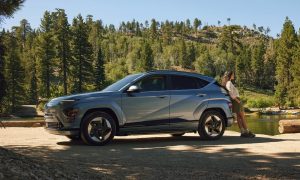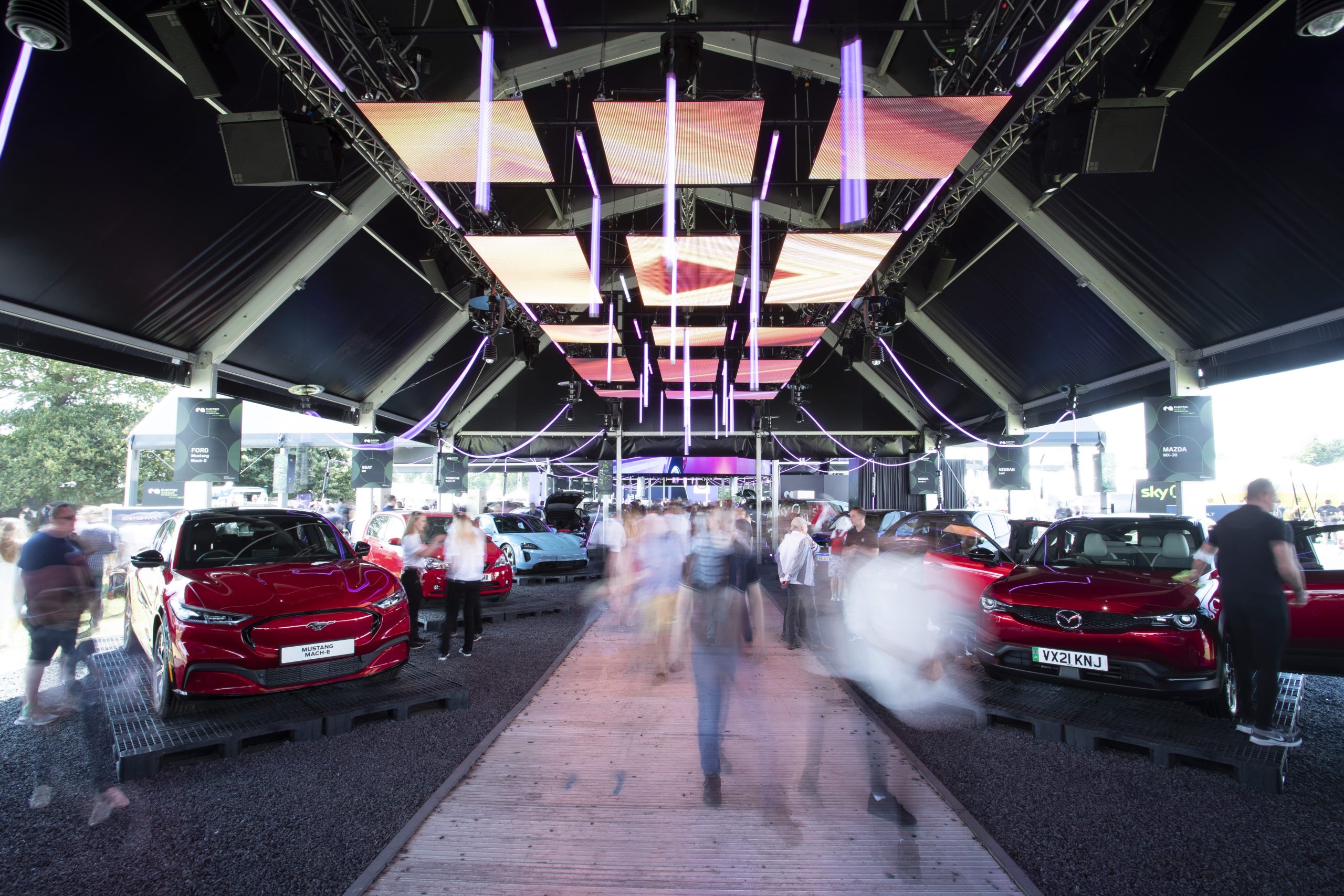

News
Goodwood hosts the introduction of many new EVs
This week, the Goodwood Festival of Speed is happening in West Sussex, England, and many manufacturers are showing off production and concept electric vehicles.
The Goodwood Festival of Speed has been an annual event showing off many different cars since 1993. Since its inception, Goodwood has been the chosen location for many manufacturers to reveal their new cars, especially those who are looking to impress and allure the European market. This year is no different, and electric vehicles have become more of a part of the festival than ever before with the introduction of the Goodwood “Electric Avenue.”
For those unable to attend the event this year, this article will be a culmination of all the new electric vehicles being shown at the event, production, concept, racecar, or otherwise.
Polestar –
- Polestar 5 prototype on track (Credit: Polestar)
- Polestar to debut first electric performance SUV, Polestar 3, in October 2022
Polestar brought multiple vehicles to the Goodwood festival of speed; the Polestar 2, Polestar 3 SUV, and even their prototype Polestar 5 GT sedan. The Polestar 5 was the star of the show, and according to their press release on the vehicle, the Polestar will have a new 800-volt architecture and will be paired with a dual-motor 884 horsepower and 663 pound-feet of torque motor system. Range information, release date, and pricing have not been released for the vehicle yet.
Polestar has been documenting the process of the transformation of the Polestar Precept concept car into the Polestar 5 that we see today on their YouTube channel. More specific details about interior and exterior design can be found there.
No specific specifications have yet been released for the Polestar 3 SUV. However, in the most recent press release on the SUV, the company claimed it was aiming for a 372-mile WLTP range and would partner with computer chip manufacturer Nvidia to implement a LIDAR system on the vehicle.
Ford –
- Ford SuperVan interior (Credit:Ford Performance)
- Ford Supervan side profile (Credit:Ford Performance)
- Ford SuperVan Driver Corner (Credit:Ford Performance)
While headlining their ever-popular Mach E, Ford also revealed their “Pro Electric SuperVan.” The concept of the SuperVan originated, according to MotorTrend, in the early 70s as a cargo van’s body was wrapped around a GT40’s internals. Ford made two generations of Supervan after its first appearance, but in this fourth generation, it is going electric. This proof-of-concept vehicle took the vague body shape of the new Ford E Transit, lowered it to the ground, and introduced massive flying buttresses to the typically tame utility van. In MotorTrend’s interview with Ford, they say that the van can go from 0-60 in just under 2 seconds and that the vehicle has roughly 2000 horsepower. Hopefully, this vehicle, much like previous SuperVans, is not planned to race or be sold. It does highlight some of the amazing electric technology Ford is working to bring to consumers and may even pique the interest of more combustion-minded car enthusiasts.
Lexus –
- (Credit: Lexus)
- Lexus Concept Coupe to be unveiled at Goodwood 2022 (Credit:Lexus)
- Lexus Coupe Concept from the front (Credit: Lexus)
Lexus first revealed its LFA lookalike EV back in December of last year, but other than the claim that the vehicle will be able to do 0-60 in the mid-2 seconds, little to nothing is known about the vehicle. From what is listed on the Lexus website, the brand states the vehicle may use solid-state batteries and will hope to achieve a range of 430 miles per charge, a number certainly capable of competing with Tesla if released.
The other vehicle brought to Goodwood by Lexus is the recently revealed RZ 450e, the Lexus variant of the BZ4X/Soltera. Similarly to the other all-wheel-drive variants, the vehicle will have ~226 miles of range, feature an all-wheel-drive setup via dual motors, and will be able to fast charge at 150kW, allowing 20%-80% in roughly half an hour. Where the Lexus differs from its Toyota and Subaru siblings is in its power, the vehicle will produce 312 horsepower compared to the 215 on the Subaru and Toyota.
More broadly, Akio Toyoda announced in December of last year that the Lexus EV coupe and new RZ 450e will be part of 16 new electric vehicles that Toyota plans to bring to the market. These electric vehicles are a key part of Toyota’s carbon neutrality strategy.
Lotus –
- Lotus Eletre press release March 2022 (Credit: Lotus)
- Lotus Goodwood stand; three car garage 2022 (Credit: Lotus)
- Lotus Evija at Monterey Car Week (Credit: Lotus)
With the acquisition of the Lotus brand in 2017, the brand has been doing a lot of work to rejuvenate itself. Its most recent attempt to do so comes in the form of two electric vehicles. The Lotus Evija is the brand’s newest quad motor electric hypercar; making 1972 horsepower, weighing only 3703 pounds (making it the lightest production EV according to Lotus), and maintaining a WLTP range of 215 miles.
The other EV shown by Lotus at Goodwood is their new Eletre SUV. This electric SUV is set to compete with the likes of the Tesla Model X Plaid, the Rivian R1S, and perhaps the future Mercedes EQG. The 4wd SUV uses a dual motor setup paired to an over 100kwh battery, is capable of up to 900 horsepower, and claims the first-ever “deployable LIDAR system” in a production EV.
McMurtry –
- McMurtry Speirling debut at Goodwood 2022 (Credit:McMurtry)
- McMurtry Spiering and driver (Credit:McMurtry)
The startup McMurtry Automotive has designed and built a single-seater electric racecar that they hope will be able to achieve 0-60 in 1.5 seconds; the Speirling. According to the company’s website, the car will supposedly be able to achieve this due to a vacuum system that sucks air from under the car, essentially giving the car downforce even while stationary. On top of that, the car weighs under 2,205 pounds and has a power-to-weight ratio of 1,000 horsepower per ton.
Porsche –
- Cayman GT4 ePerformance as seen on track in testing in Valencia (Credit:Porsche)
- Porsche 718 Cayman GT4 ePerformance on track from behind in Valencia
- Porsche 718 Cayman GT4 ePerformance on track in Valencia (Credit:Porsche)
Perhaps one of the most eye-catching vehicles at Goodwood this year is the Porsche 718 Cayman E-Performance. Porsche took one of their GT4 Cayman ICE vehicles but replaced the engine with a dual motor setup and a battery that is designed to allow for 30 minutes of track use, or what Porsche says is the exact length of a Carrera Cup Race. Porsche says the motor system can produce 986 horsepower peaks but produces 603 horsepower in the effort of maintaining power throughout the 30 minutes. Matthias Shultz, a Porsche Racing project manager, comments as part of an accompanying Porsche press release that “we’ve shown how Porsche envisages sustainable customer motor racing in the future. The 718 Cayman GT4 ePerformance now demonstrates that this vision works impressively on the racetrack.”
According to Car and Driver, this prototype vehicle comes before the anticipated next generation of Cayman and Boxster vehicles that will be adopting an electric drive train that will be released in 2025. These models will be a key part of Porsche’s plan to become carbon neutral by 2030.
Kia/Hyundai –
- Electrified G80 seen plugged in via Genesis website
- Genesis G80 Electrified back driver side via Genesis website
- Genesis GV70 side profile via Genesis website
- Genesis GV70 in the dark via Genesis website
- Genesis GV60 at night via Genesis website
- Genesis GV60 via Genesis website
- Genesis Speedium X Concept car to be featured at Goodwood 2022 (Credit:Genesis)
Kia and Hyundai are no longer new to the EV industry, especially after their successful launches of the EV6 and Ioniq 5, respectively. At Goodwood, Kia and Genesis showcased a combined four production electric models and will supposedly also show their Speedium Coupe concept car.
The Kia EV6 GT was on display and will be the high-performance version of the current EV6 on the market. The new EV6 will have 576 horsepower and 545 pound-feet of torque, propelling the vehicle to 60 in 3.5 seconds and achieving a top speed of 161 miles per hour. However, with competition from its own Genesis brand for other powerful electric crossover vehicles, it is unclear how much attention the GT will receive.
The Genesis vehicles, the GV60, GV70, and G80 are the more upscale versions of the EV6 platform. Looking at the Genesis website, each of them offers impressive specifications, but each is going after quite a different clientele. For the performance luxury sedan lovers, the G80 will offer 323 miles of WLTP estimated range, will be capable of “22-minute ultra-fast charging” (from 10%-80%) via Hyundai/Kia’s new 800-volt architecture, and feature a dual-motor all-wheel-drive system delivering 364 total system horsepower.
Crossover customers will have the choice of either the GV60 or the larger GV70. The GV60 will offer slightly better performance than the G80 in many different ways; it will have a max of 321 miles of WLTP estimated range (front-wheel-drive model), will be capable of “18-minute ultra-fast charging” (from 10%-80%) and will offer a max of 483 total system horsepower from a dual-motor setup (all-wheel-drive model). The GV70 has not had full specs announced as of yet but will likely be very similar to its GV60 counterpart; ~18-minute fast charging, ~490 horsepower, etc. What Genesis has said is that the GV70 will be capable of vehicle-to-load use.
Finally, Genesis will supposedly reveal their Genesis X Speedium Coupe, which was first introduced as a concept car titled the X Concept. However, Goodwood is the first place the vehicle has been seen in the real world. If the looks and the other vehicles released are anything to go by, its specifications may be incredible.
Fisker
- (Credit: Fisker)
- Credit: Fisker Inc.
Fisker is part of a smaller group of startups that made an appearance at the festival, however, with news that they recently hit over 50,000 reservations, Fisker may now be worthy of the attention of many looking for an affordable EV SUV. There is still only limited information in terms of specifications, however, the brand plans on a starting price of $37,499. The brand’s website does state that the top-of-the-line Ocean SUV will be able to achieve 350 miles of range and will have a dual-motor all-wheel-drive system.
Perhaps more striking is the many interior quirks they list on the website. A pivoting center screen and rolling down rear window are listed prominently while they also highlight the Ocean’s many “terrain modes.” According to Motor1, more detailed specifications will be announced in November.
Renault
- Renault 5 shown in 50th year anniversary of the vehicle (Credit:Renault)
- Renault 5 Concept and Renault Megane EV shown at Munich Motor Show 2021 (Credit:Renault)
While the Renault 5 has been stuck in concept car purgatory for nearly a year now, there is still reason to keep hope. In an interview with Top Gear last year, the CEO of Renault group, Luca de Meo, stated that Renault was significantly shaken when he took charge. One of the first things the CEO did was cancel 7 new ICE products and replaced them with 8 EVs that will hopefully appear in Renault or Nissan’s lineup within the next few years. One of those cars was the Renault 5, a vehicle that de Meo promised would “democratize the electric vehicle.” As of now, no specifics have been revealed about the vehicle, but this hasn’t stopped many from speculating.
With the recent release of the electric Renault Megane, many believe that the five would use a similar platform and hence, achieve similar specifications. The Megane tops out at 217 horsepower from its front-drive system, achieving 220 miles of range via a 60kWh battery, and starts at 36,000 pounds in England.
E-Go
- E.GO e.wave X seen here in yellow via E.GO website.
- E.GO Life car via E.Go website
E.GO is an EV startup from Germany looking to bring another small electric hatchback to Europe in the form of their Life and e.wave X models. According to the company’s website, both are available for pre-order. However, it is unclear how competitive their vehicle will be, considering it will have a goal starting price of 25,000 euros. The vehicle features lackluster specs compared to many of the other models shown at Goodwood; charging at only 11kWh, capable of a “city miles” range of 150 miles, and while only using a single motor front-wheel drive 100hp setup. This car will likely have to compete with larger brands by competing on price, but it is unclear at this time if the 25,000 euro price tag is low enough.
Formula E
- Next generation formula e jaguar car in testing on track.
- Porsche’s gen 3 formula e car in testing.
Formula E also made an appearance at the Goodwood hill climb. The Mahindra racing team introduced their new livery and a third-generation racecar that will compete in the upcoming season 8 of Formula E. The Formula E website lists many upgrades coming to the new car; the new open-wheel racer will be capable of 200mph top speeds, will use 40% regenerated energy throughout the race, will ditch rear hydraulic breaks in exchange for a regenerative front and rear motor system, and will feature 600kW hyper-fast charging (allowing for short charging pit stops mid-race). These incredible upgrades over the previous generation may change the sport significantly in the upcoming year.
What do you think of the article? Do you have any comments, questions, or concerns? Shoot me an email at william@teslarati.com. You can also reach me on Twitter @WilliamWritin. If you have news tips, email us at tips@teslarati.com!
News
Tesla Megapacks arrive for massive battery replacing coal plant
Tesla Megapacks have started arriving on-site to the Stanwell Battery Project, just as Queensland prepares to wind down the Stanwell coal plant.
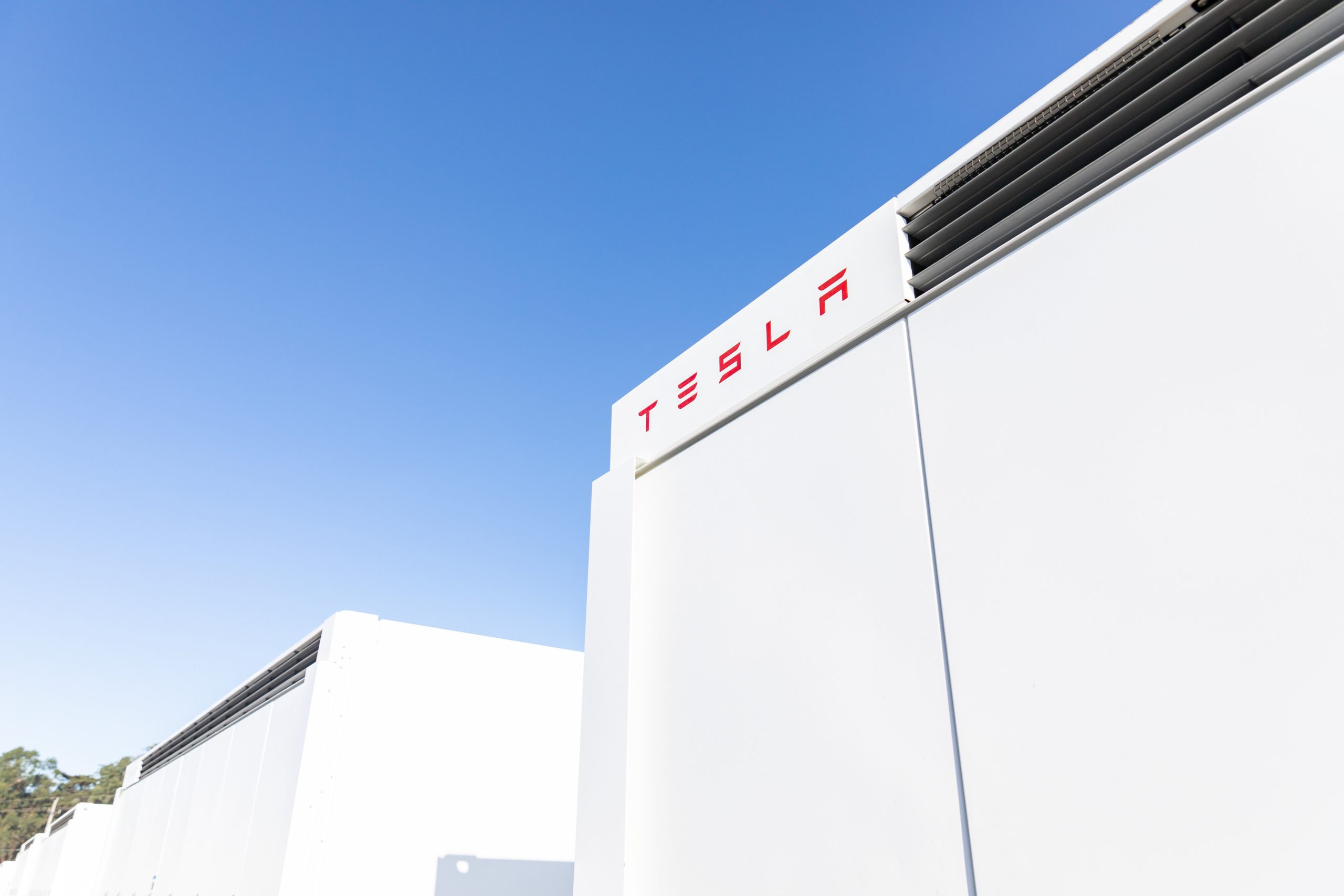
The first of over 300 Tesla Megapacks have arrived to the site of a massive battery energy storage system (BESS) being built in Australia, dubbed the Stanwell Battery Project after a coal plant it’s set to replace.
In a press release last week, the Stanwell Battery Project announced that the first Tesla Megapack 2XL units had arrived to the site, which is located outside of Rockhampton in Queensland, Australia. The project will eventually feature 324 Megapack units, set to arrive in the coming months, in order to support the 300MW/1,200MWh battery project.
“The Stanwell Battery is part of the diversification of our portfolio, to include cleaner and more flexible energy solutions,” said Angie Zahra, Stanwell Central Generation General Manager. “It is just one part of the 800 MW of battery energy storage capacity we have in our pipeline.
“Capable of discharging 300 MW of energy for up to four hours (1,200 MWh), our mega battery will be one of the largest in Queensland.”
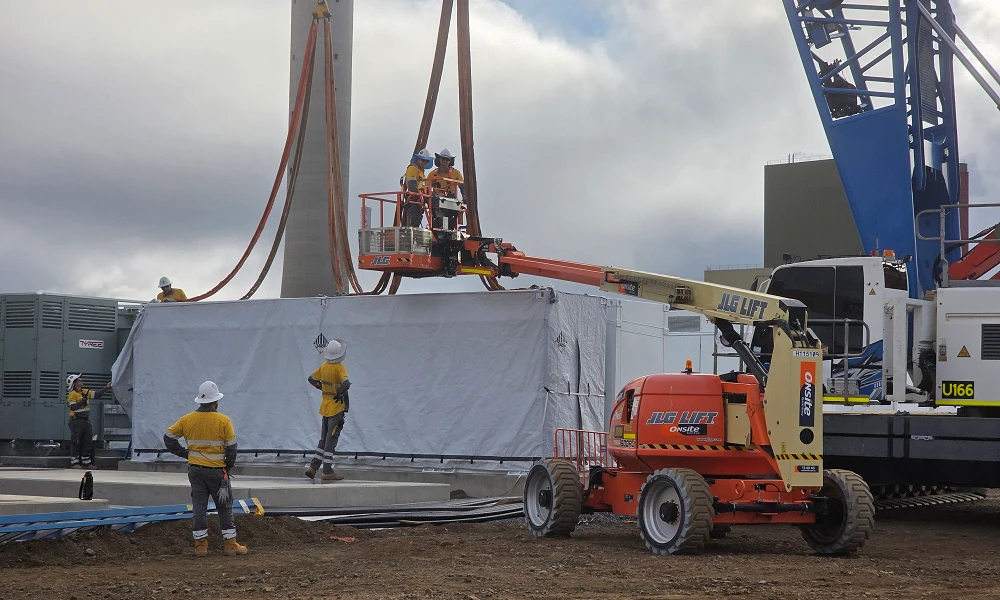
Credit: Stanwell
Did you know Tesla’s Lathrop facility churns out a Megapack every 68 minutes? That’s enough energy to power 3,600 homes for an hour per unit! ⚡️ pic.twitter.com/bG6fpHkB9O
— TESLARATI (@Teslarati) June 11, 2025
READ MORE ON TESLA MEGAPACKS: Tesla Lathrop Megafactory celebrates massive Megapack battery milestone
The state is working with government-owned company Yurika to facilitate construction, and the process is expected to create roughly 80 jobs. The project is expected to come fully online in May 2027, with initial commissioning of the Megapacks aiming for November 2025.
The Stanwell Battery is set to replace the nearby Stanwell coal generation plant, which the government is planning to wind down starting in 2026 as part of efforts to reach an 80 percent renewable energy generation ratio by 2035. Meanwhile, the government is also set to begin winding down the Tarong and Callide coal plants, while several other Megapack projects are being built or coming online. o ya
Tesla currently has two Megapack production facilities, located in Lathrop, California, in the U.S. and another that came online earlier this year in Shanghai, China. The Shanghai Megafactory shipped its first units to Australia in March, while both factories are expected to be capable of producing 10,000 Megapack units per year upon reaching volume production.
News
The Tesla Diner is basically finished—here’s what it looks like
The company first broke ground on the Diner, Drive-in, and Supercharger location in September 2023. Now, it has served one of its first internal customers.
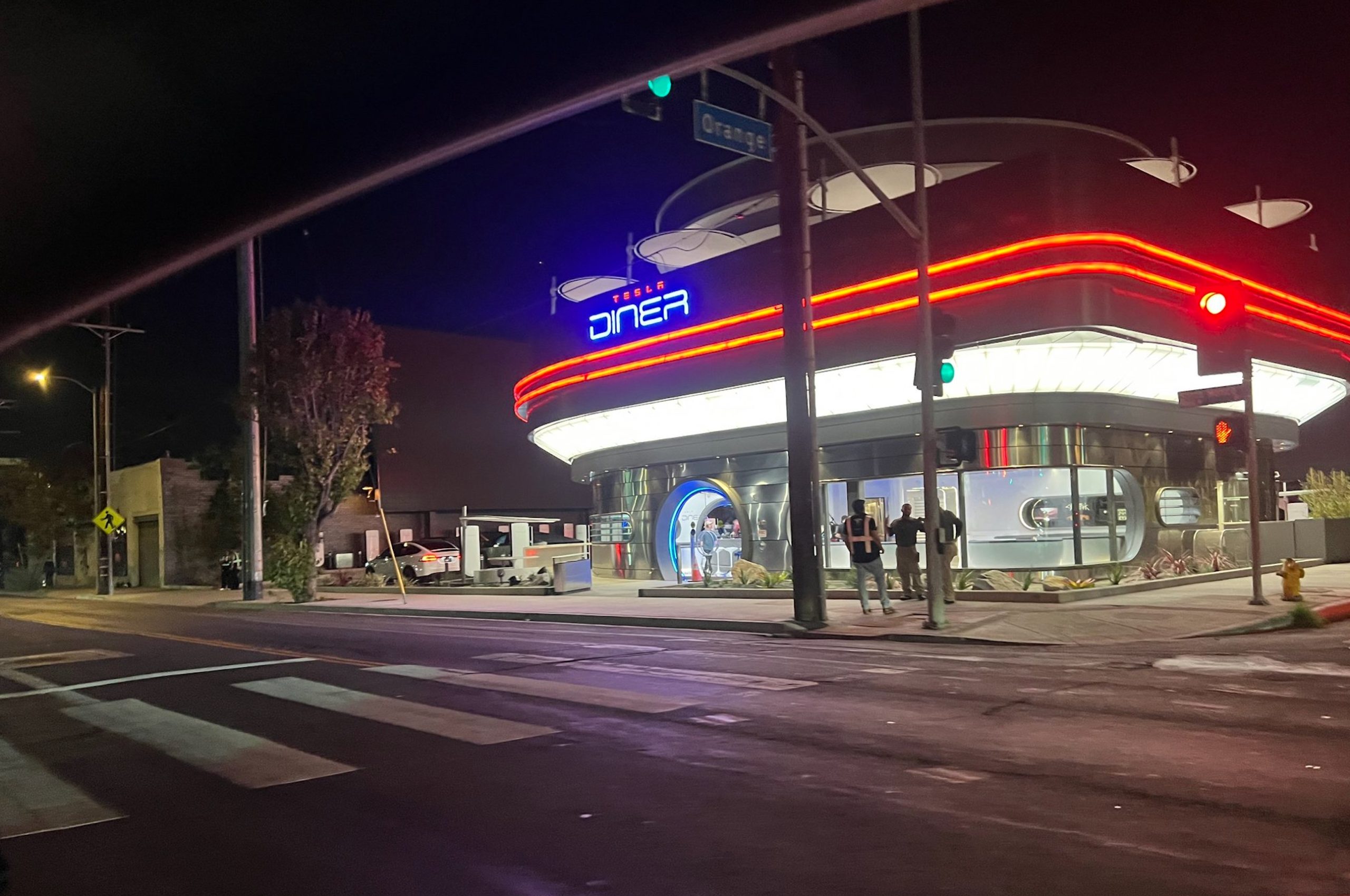
Tesla has finally completed the construction of its highly anticipated Diner, Drive-in, and Supercharger in Los Angeles, and recent photos of the interior’s “retro-futuristic” style are making their way around the internet.
X user Brad Goldberg shared photos from the Tesla Diner site last Tuesday, depicting some of the Supercharger stalls, indoor and outdoor seating areas, multiple neon lights, and even an Optimus robot. Goldberg also noted that there had been a “flurry of activity on site” while he was snapping the photos last week, suggesting that the restaurant location could be getting close to opening.
The Tesla Diner also served one of its first internal customers in the past few days, as Elon Musk posted on X on early Monday morning that he had just finished up eating a meal at the site:
I just had dinner at the retro-futuristic Tesla diner and Supercharger.
Team did great work making it one of the coolest spots in LA!
The photos also show that the site is pretty much done, with some of them even showing vehicles charging at the charging stalls.
You can see some of the latest photos of the Tesla Diner below.
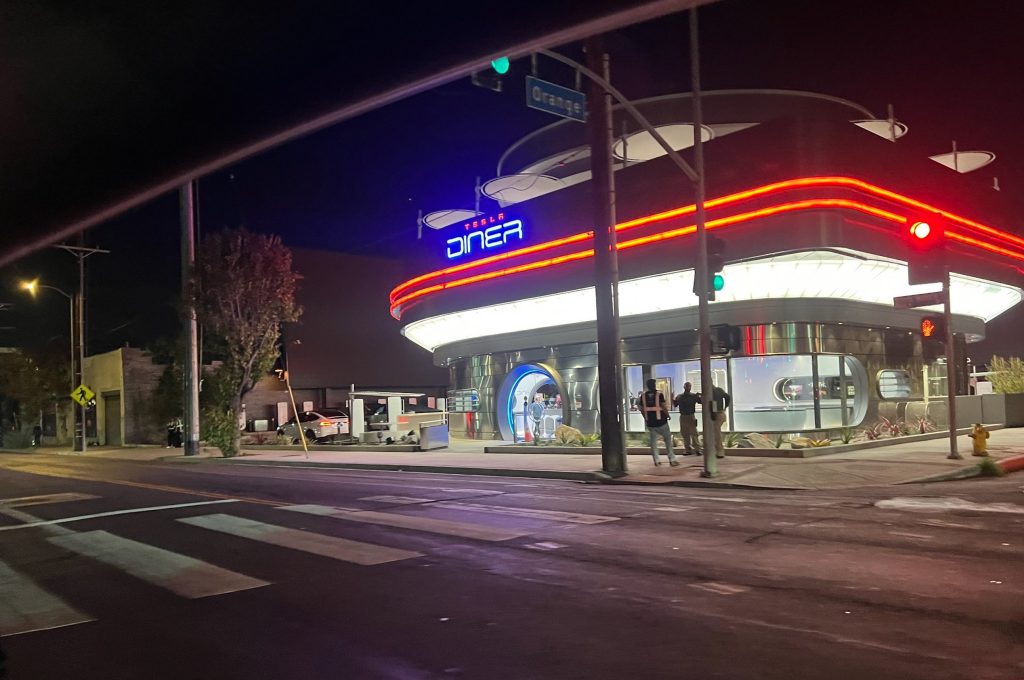
Credit: BradGoldbergMD | X
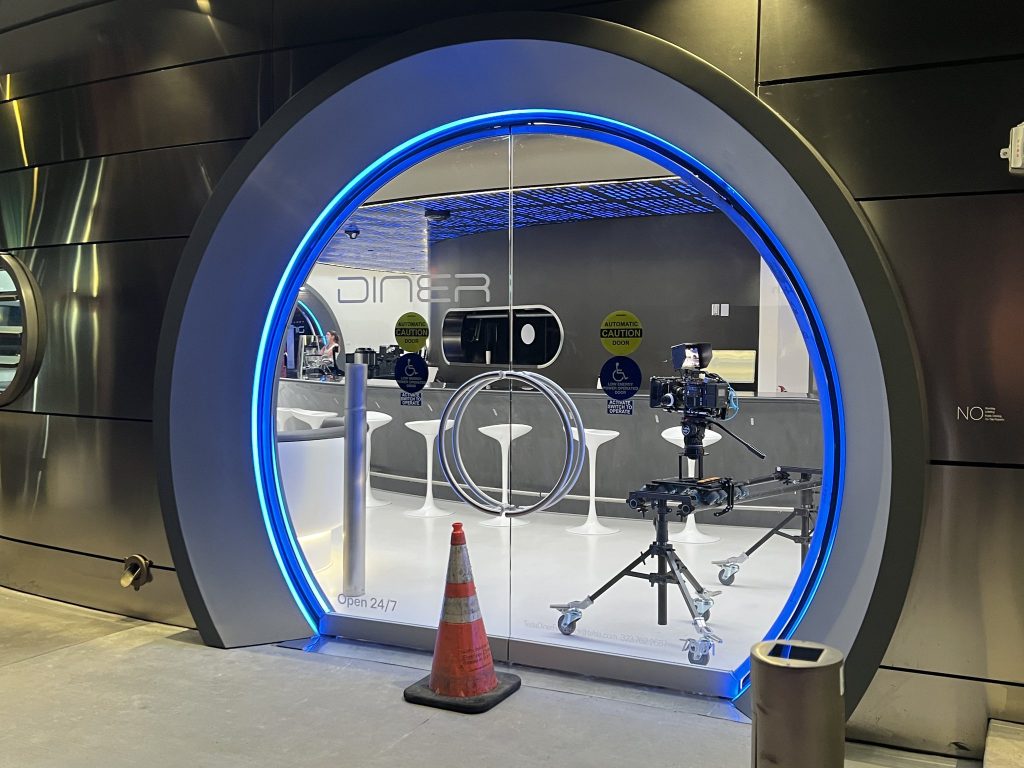
Credit: BradGoldbergMD | X
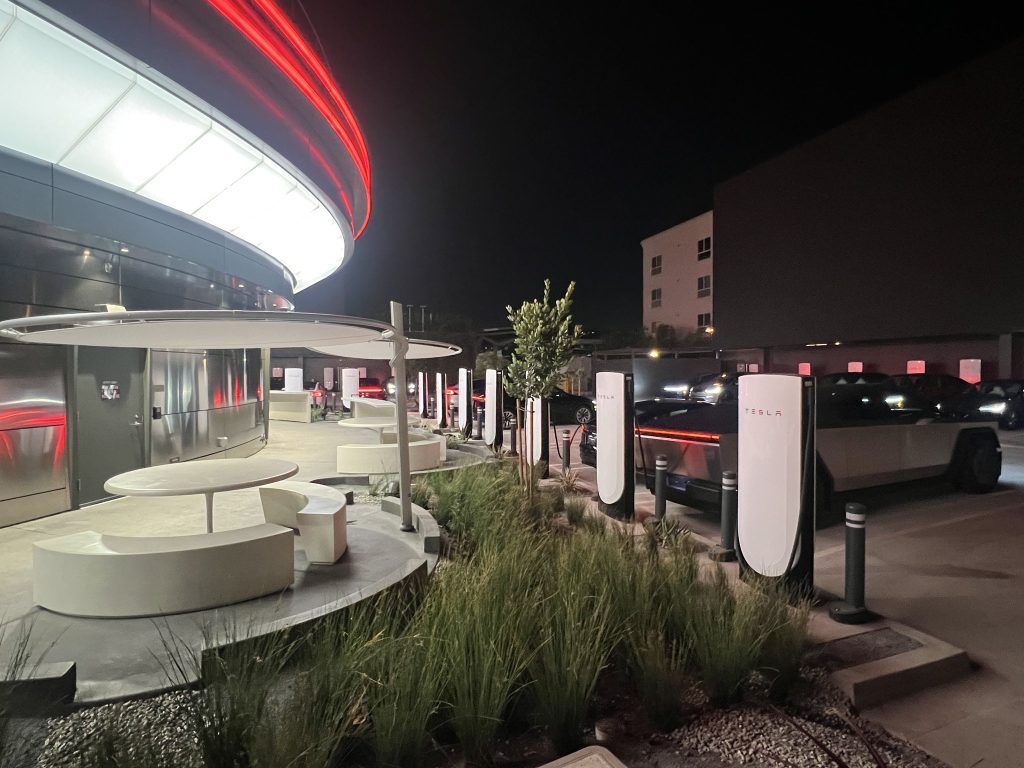
Credit: BradGoldbergMD | X
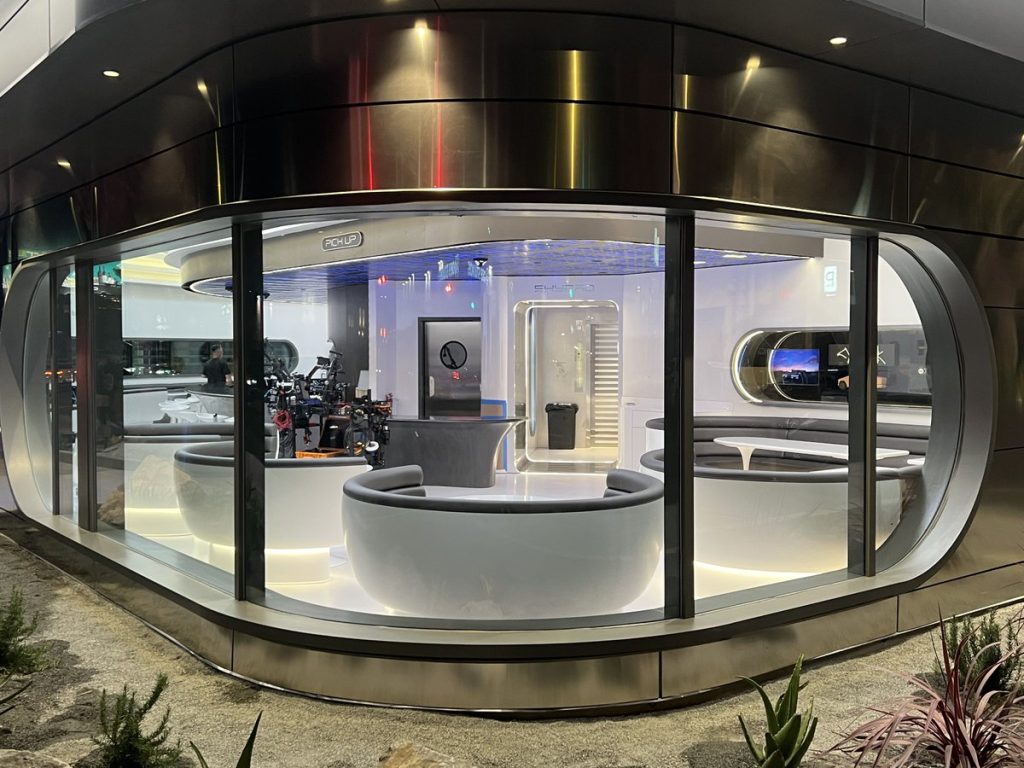
Credit: BradGoldbergMD | X
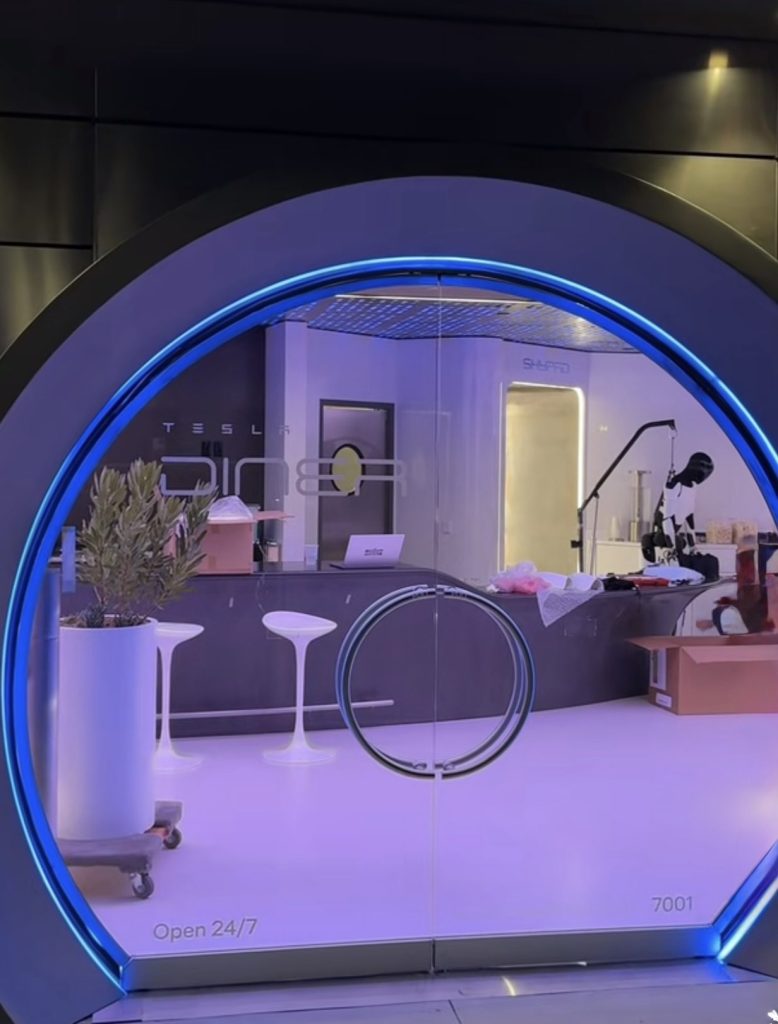
Credit: TeslaKing420 | X

Credit: TeslaKing420 | X
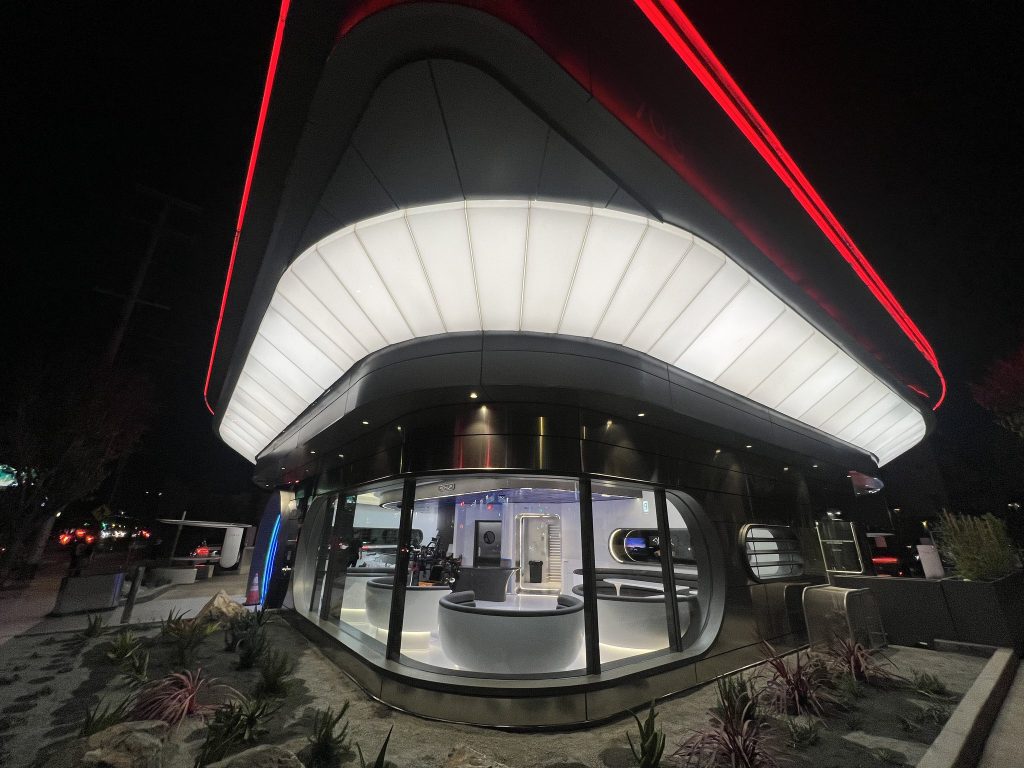
Credit: Brad Goldberg (via Sawyer Merritt on X)
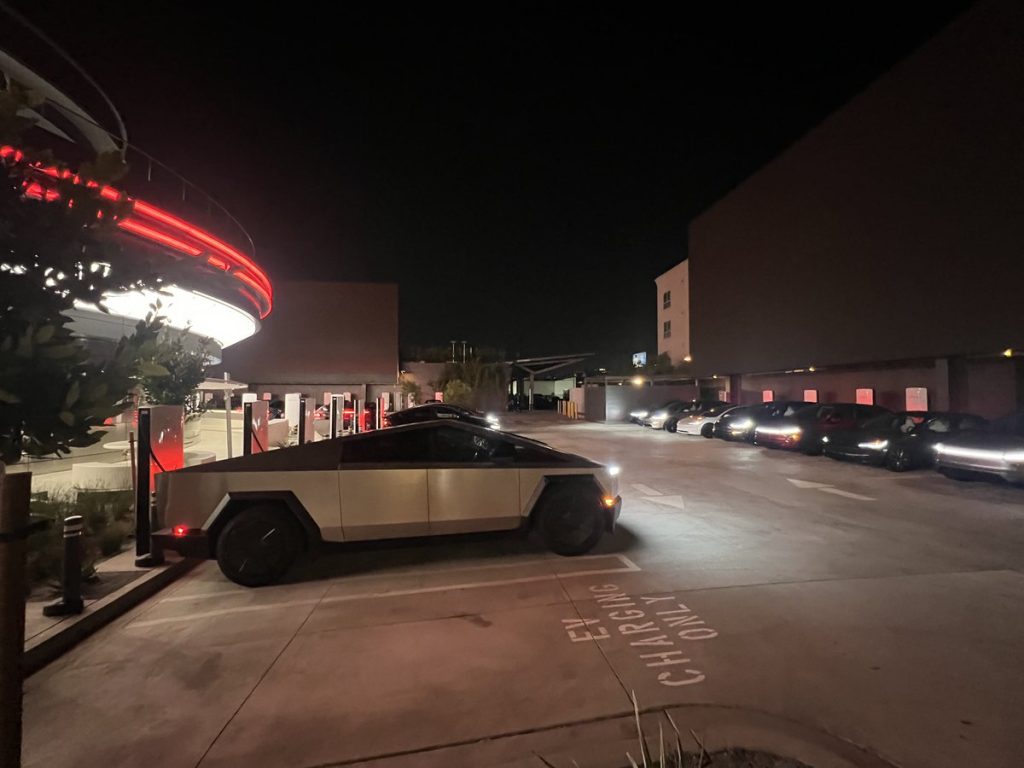
Credit: Brad Goldberg (via Sawyer Merritt on X)
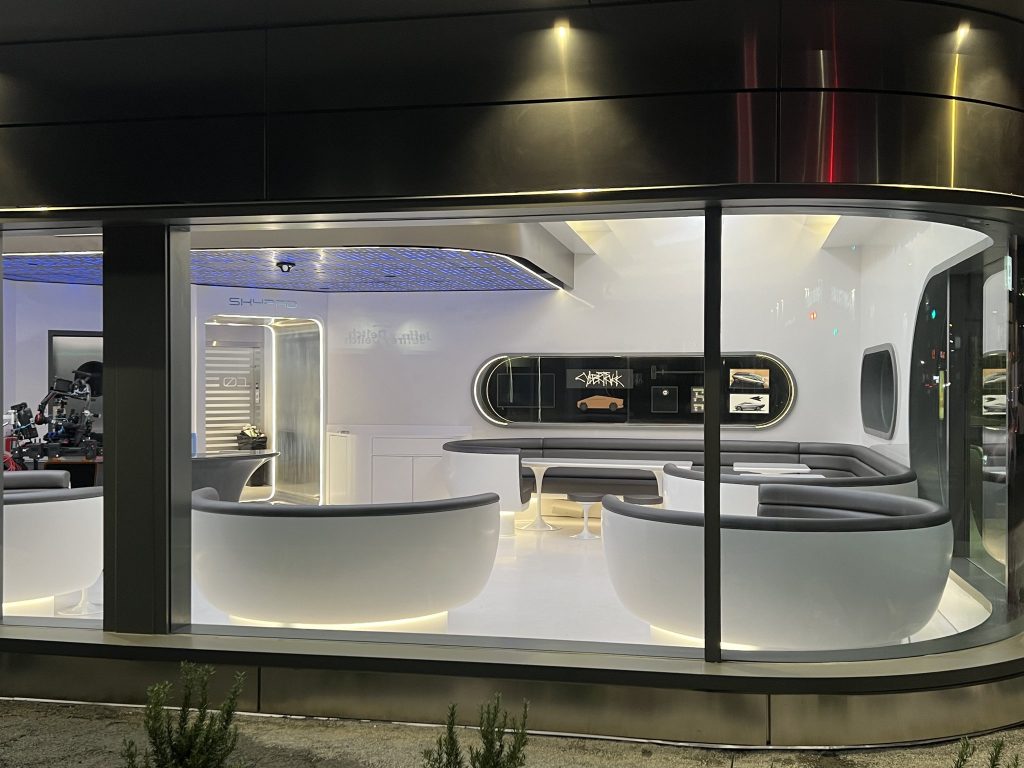
Credit: Brad Goldberg (via Sawyer Merritt on X)
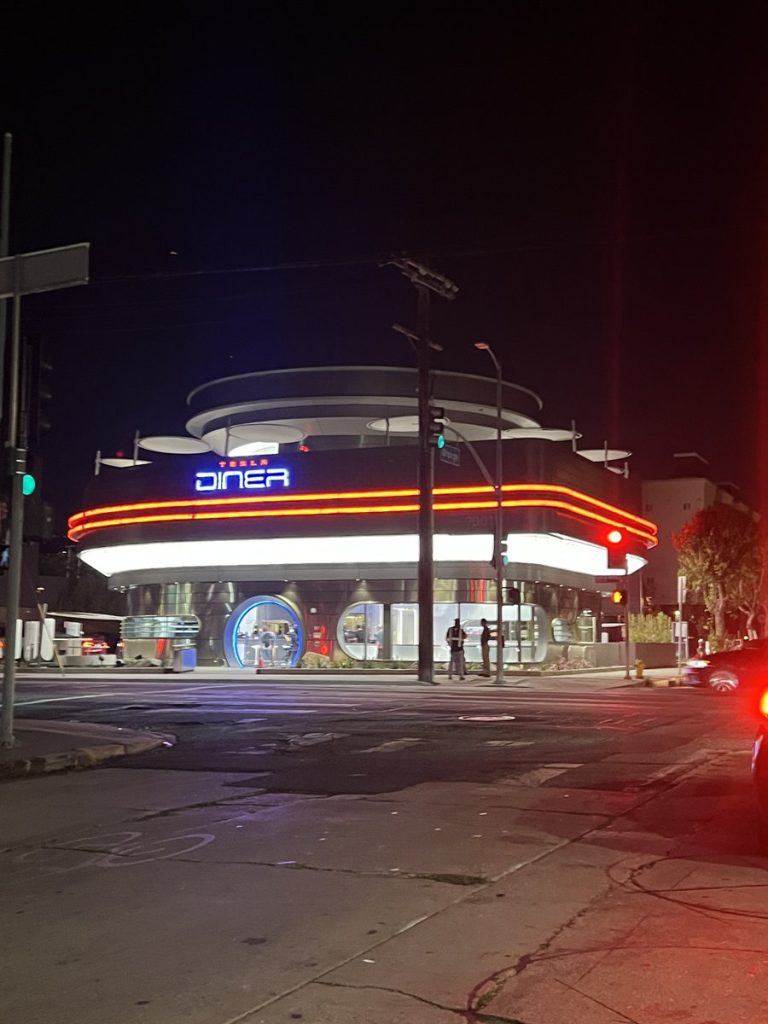
Credit: Brad Goldberg (via Sawyer Merritt on X)
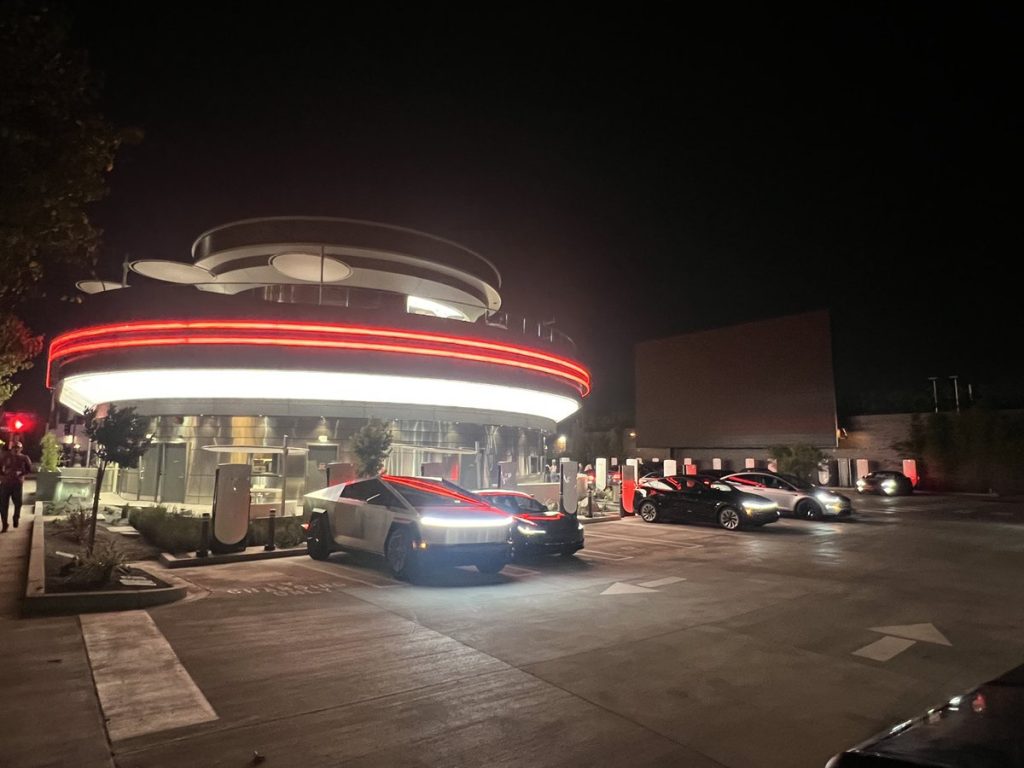
Credit: Brad Goldberg (via Sawyer Merritt on X)
READ MORE ON TESLA’S LA DINER: Tesla readies Drive-In Diner Supercharger for launch with app inclusion
When will the Tesla Diner open to external customers?
While it’s still not open to external customers yet, the news again suggests that the company could be close to an official opening date. Tesla first broke ground on the Diner in September 2023, after receiving a wave of building permit approvals throughout that year. Teslarati also covered much of the construction progress throughout last year, including when crews installed the first and second drive-in screens.
Located at 7001 West Santa Monica Boulevard, the idea was first discussed in 2018 by Musk and a few others on Twitter, featuring 1950s rock and roll, waiters on roller skates, and drive-in movie theater screens playing clips from some of history’s best movies. Notably, the photos of the front doors also show that the site will be open 24 hours a day, 7 days a week, whenever it does end up opening.
Tesla’s progress on Supercharger with diner, drive-in seen in aerial footage
Elon Musk
Tesla updates Robotaxi app with several big changes, including wider service area
Tesla’s Robotaxi app has gotten another update, and this time it offers a wider service area, but there are a lot of other changes, too.

Tesla is rolling out its second update to its Robotaxi app after it launched the driverless ride-hailing service less than a month ago in Austin.
Among the changes, Tesla has expanded its service area, added walking directions to both the pickup and dropoff areas, added closing times for dropoff destinations, and allowed editing of your destination after booking a ride.
The new app version, Robotaxi 25.7.5, was rolled out on Monday morning. The biggest change is the near doubling of the service area, as Tesla expanded the possible travel region by a significant margin:
Tesla’s Robotaxi geofence in Austin grows, and its shape is hard to ignore
It’s no surprise Tesla decided to push the envelope with a new, interesting shape to the geofenced area that is hard to ignore.
The new region includes notable points of interest in Austin, most notably is the University of Texas at Austin. Tesla included the school, which has over 53,000 students, in this expansion, and it could be pushing the app and service to some of them in the coming weeks.
It’s a great addition as it is a highly concentrated area of the city, full of students and visitors.
Robotaxi app changes outside of new service area
Tesla has also added a handful of new changes. With its first update of the Robotaxi app, Tesla addressed several highly requested changes, including the ability to adjust the pickup location instead of being fixed to a default spot.
Walking Directions to Pickup and Destination
In congested and large metro areas, ride-sharing pickups are sometimes confusing to navigate to. When it comes to dropoff at your destination, exiting the vehicle at the front door is not always possible (many in Austin noticed this at Terry Black’s BBQ).
Tesla Robotaxi’s biggest challenge seems to be this one thing
Now, the app will guide you on how to reach your Robotaxi and your destination when pickup and dropoff are not available at the entrances of the establishments you’re visiting.
Search Results now show closing times
If you’re going to arrive at an establishment close to its closing time, the Robotaxi app will now warn you that you could arrive with only a few minutes to spare, or you could miss it altogether.
This is a nice touch because there’s nothing worse than craving some ice cream at 10 p.m., only to arrive and see the doors are locked and the lights are off.
Many navigation apps have this integrated to eliminate any confusion about closing times.
Destination editing after booking
This feature could go hand-in-hand with the closing times. As a business might close shortly after your arrival, you might find it advantageous to visit another establishment that has more time to serve you.
You can now pivot your destination after you have entered your Roobtaxi.
-

 Elon Musk2 weeks ago
Elon Musk2 weeks agoTesla investors will be shocked by Jim Cramer’s latest assessment
-

 News2 days ago
News2 days agoTesla debuts hands-free Grok AI with update 2025.26: What you need to know
-

 Elon Musk4 days ago
Elon Musk4 days agoxAI launches Grok 4 with new $300/month SuperGrok Heavy subscription
-

 Elon Musk6 days ago
Elon Musk6 days agoElon Musk confirms Grok 4 launch on July 9 with livestream event
-

 News1 week ago
News1 week agoTesla Model 3 ranks as the safest new car in Europe for 2025, per Euro NCAP tests
-

 Elon Musk2 weeks ago
Elon Musk2 weeks agoxAI’s Memphis data center receives air permit despite community criticism
-

 News4 days ago
News4 days agoTesla begins Robotaxi certification push in Arizona: report
-

 Elon Musk2 weeks ago
Elon Musk2 weeks agoTesla scrambles after Musk sidekick exit, CEO takes over sales


